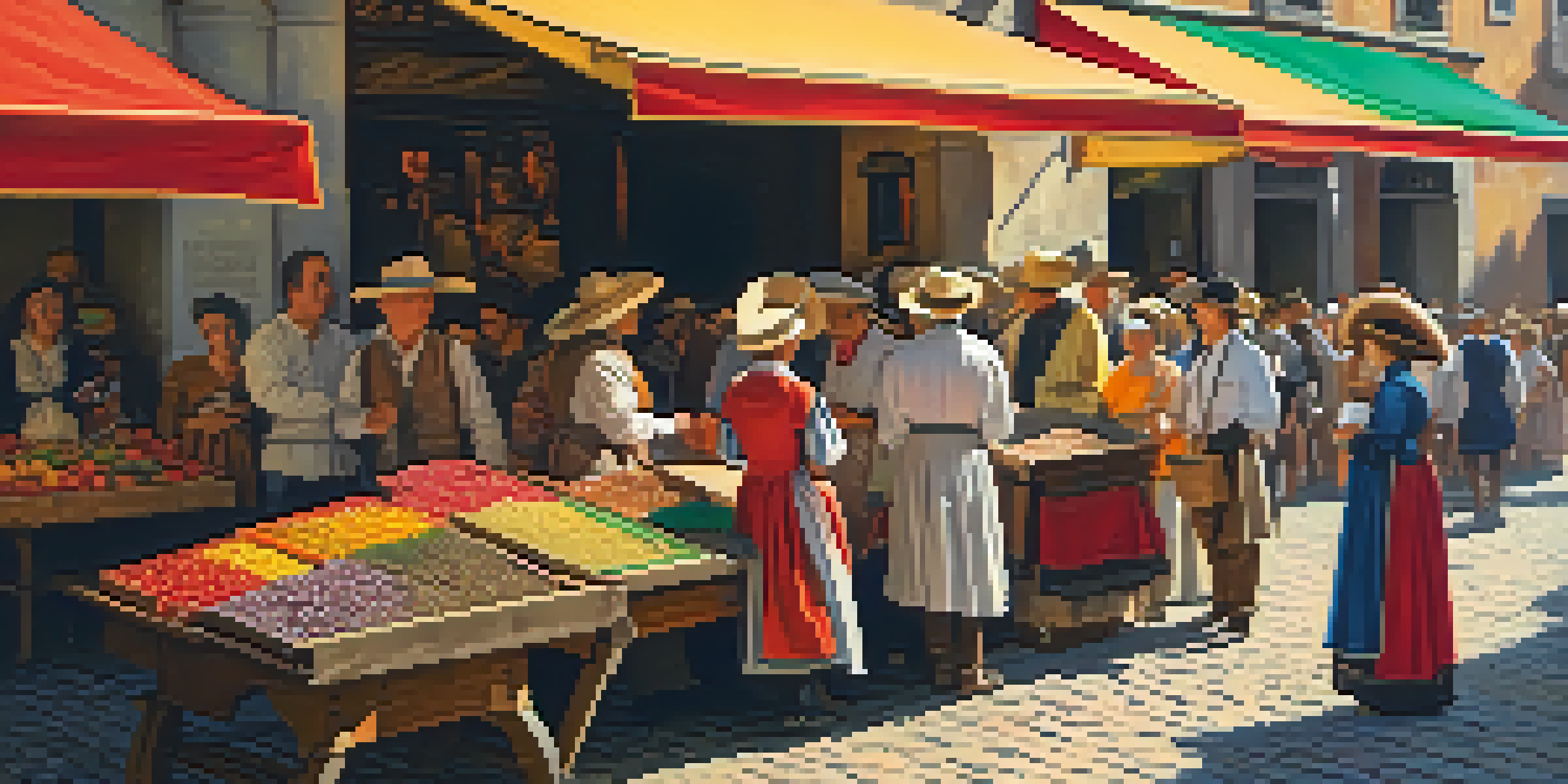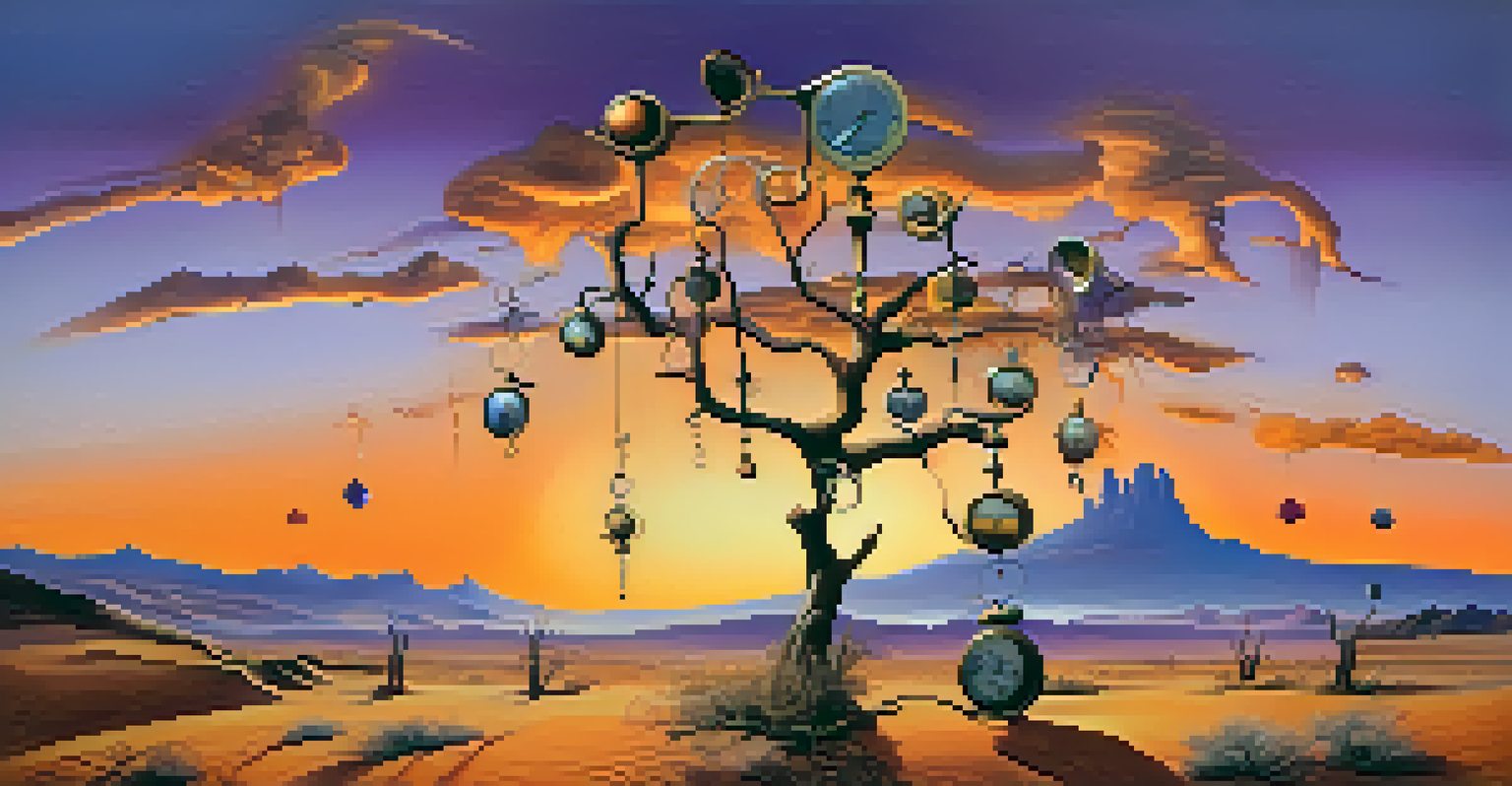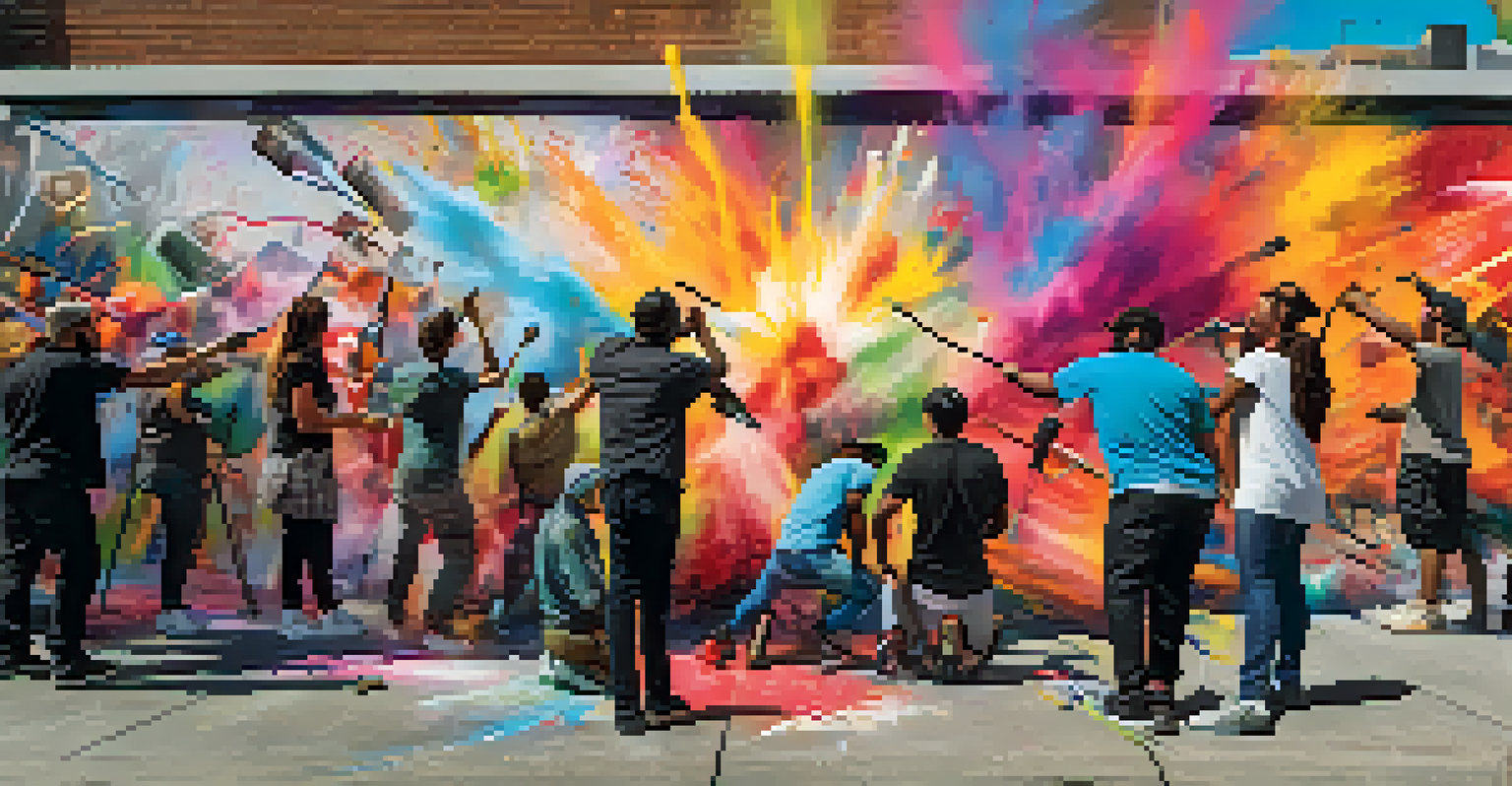Exploring the Impact of Spanish Artists on Global Art Movements

From the Golden Age to Modernism: A Spanish Odyssey
Spanish art has a rich history that dates back to the Golden Age, a period marked by remarkable painters like Diego Velázquez and Francisco Goya. These artists not only captured the essence of their time but also influenced future generations with their innovative techniques and compelling narratives. Their works laid the groundwork for modern artistic movements, demonstrating how local culture can resonate on a global scale.
Art is the most beautiful of all lies.
As we transition into the 20th century, artists like Pablo Picasso and Salvador Dalí emerged, pushing boundaries and exploring new forms of expression. Picasso, with his revolutionary cubism, redefined how we perceive space and form in art. Meanwhile, Dalí's surrealist approach invited viewers into a dreamlike realm, challenging the norms of reality and perception, further extending Spain's influence in the global art scene.
These artists exemplified how Spanish creativity could spark movements that transcended borders. Their ability to blend tradition with innovation offered a fresh perspective, inviting artists worldwide to explore new avenues in their work. This legacy continues to inspire today's artists, who draw upon the rich tapestry of Spanish art history.
Exploring the Role of Surrealism in Spanish Art
Surrealism, a movement that sought to unleash the subconscious mind, found a vibrant expression in Spanish art through figures like Salvador Dalí and Joan Miró. These artists used dreamlike imagery and bizarre juxtapositions to challenge conventional thinking, inviting viewers into a world where logic often took a backseat. Their unique styles contributed to the global appreciation of surrealism, making it a significant art movement of the 20th century.

Dalí's works, characterized by meticulous detail and striking symbolism, transformed everyday objects into extraordinary subjects, while Miró's playful forms and vivid colors celebrated spontaneity and imagination. Together, they showcased how Spanish artists could innovate within a broader movement, making surrealism not just a European phenomenon but a global one. Their contributions encouraged artists around the world to explore the depths of their own creativity.
Spanish Art: A Global Influence
From the Golden Age to modern times, Spanish artists have consistently shaped global art movements through their innovative techniques and cultural narratives.
The impact of Spanish surrealism is still evident today, as contemporary artists continue to experiment with the dreamlike qualities established by their predecessors. This ongoing exploration highlights the lasting influence of Spanish artists, demonstrating how their unique perspectives can inspire new generations to break free from artistic conventions and embrace the unconventional.
The Influence of Spanish Impressionism on Global Trends
Impressionism, known for its focus on light and color, found a unique voice through Spanish artists like Joaquín Sorolla. His works, celebrated for their vibrant hues and fluid brushstrokes, captured the essence of everyday life in Spain, showcasing the beauty of landscapes, beaches, and intimate family scenes. Sorolla's ability to infuse his paintings with emotion and movement influenced many artists both in Spain and abroad.
The only thing that matters is that you are true to yourself and that you create something that you believe in.
As the movement gained traction, other Spanish artists began to adopt and adapt impressionistic techniques, creating a distinct style that reflected their cultural heritage. This blending of local elements with impressionist methods allowed Spanish artists to carve out a niche in the global art community. They demonstrated that while styles may originate in one place, they can evolve and resonate across different cultures.
Today, the impact of Spanish impressionism can be seen in the works of many contemporary artists who strive to capture the ephemeral beauty of their surroundings. By embracing the principles of light and color established by the impressionists, these artists continue to pay homage to their Spanish roots while also contributing to a broader international dialogue about art and expression.
The Spanish Baroque: A Bridge Between Cultures
The Spanish Baroque period, characterized by dramatic expression and grandeur, produced some of the most influential artists in history, including El Greco and Zurbarán. Their works not only reflect the complexities of Spanish society during their time but also served as a bridge connecting European art with the emerging styles of Latin America. This exchange enriched both regions, fostering a cultural dialogue that remains significant today.
El Greco's unique approach to color and form challenged traditional perspectives, while Zurbarán’s religious themes resonated deeply with audiences. Their ability to convey emotional depth and spiritual intensity through art laid the groundwork for future movements that emphasized personal expression. This cross-cultural influence is a testament to how art can serve as a universal language, transcending geographical boundaries.
Surrealism's Spanish Legacy
Artists like Salvador Dalí and Joan Miró not only defined Spanish surrealism but also inspired a worldwide appreciation for the movement's dreamlike qualities.
As contemporary artists reflect on the Spanish Baroque, they often draw inspiration from its emotional richness and narrative power. By revisiting and reinterpreting these historical themes, artists today contribute to a broader understanding of cultural identity and artistic evolution. This ongoing dialogue between the past and present ensures that the legacy of Spanish Baroque continues to inspire and influence global art movements.
Modern Spanish Artists: Redefining Global Art Narratives
In the contemporary art scene, Spanish artists like Antoni Tàpies and Miquel Barceló have made significant strides, redefining how we understand art today. Tàpies, known for his textured, mixed-media works, challenged traditional notions of painting by incorporating materials like sand and rope. His innovative approach not only reflects Spain’s cultural identity but also engages with broader global themes of existence and materiality.
Miquel Barceló, on the other hand, utilizes vibrant colors and spontaneous forms to explore themes of nature and humanity. His large-scale installations and paintings have garnered international acclaim, showcasing how Spanish artists can navigate and influence global art narratives. They prove that contemporary art is not just a continuation of historical styles but an evolving conversation that incorporates diverse cultural influences.
These modern artists illustrate that the impact of Spanish creativity is far-reaching, inviting dialogue and collaboration across borders. Their works challenge viewers to rethink established artistic conventions and embrace new perspectives. As they continue to break new ground, they contribute to a dynamic art landscape that reflects the complexities of our interconnected world.
Feminist Perspectives in Spanish Art Movements
The rise of feminist art in Spain has brought forth powerful voices that challenge societal norms and advocate for gender equality. Artists like María Blasco and Esther Ferrer have used their platforms to address issues of identity, sexuality, and the female experience within the broader context of art history. Their works not only reflect personal narratives but also resonate with collective struggles, making a significant impact on both national and global art movements.
By incorporating elements of performance, installation, and multimedia, these artists engage audiences in new ways, inviting them to consider the complexities of gender and representation. Their innovative approaches have sparked conversations around the role of women in art, pushing for greater visibility and recognition. This movement has paved the way for younger generations, encouraging them to explore their own voices and experiences in their artistic expressions.
Feminism's Role in Spanish Art
The rise of feminist art in Spain has empowered artists to challenge societal norms and advocate for gender equality, making a significant impact on both national and international art scenes.
The influence of feminist perspectives in Spanish art is a testament to the power of creativity as a tool for social change. As these artists continue to challenge conventions and inspire dialogue, they demonstrate that art is not just a reflection of society but also a catalyst for transformation. The ongoing evolution of feminist art in Spain underscores its significance in shaping global art movements and advocating for equality.
Spanish Art Collectives: Collaboration and Innovation
Spanish art collectives have emerged as dynamic forces in the contemporary art scene, fostering collaboration and innovation among artists. Groups like La Pura and Los Bravú challenge traditional hierarchies and create spaces for dialogue, experimentation, and shared creative practices. These collectives demonstrate how the spirit of collaboration can lead to groundbreaking work that resonates on both national and international levels.
By pooling their diverse talents and perspectives, collective artists often produce works that reflect a rich tapestry of ideas and cultural influences. This collaborative approach not only enriches the artistic process but also invites audiences to engage with art in new and meaningful ways. Their projects often address pressing social issues, making art a vehicle for advocacy and awareness.

The impact of Spanish art collectives is a reminder of the strength found in unity and shared vision. As they continue to push boundaries and explore new artistic territories, they contribute to a vibrant art community that celebrates diversity and innovation. Their work inspires future generations to embrace collaboration, highlighting that art can thrive in a collective environment and influence global conversations.